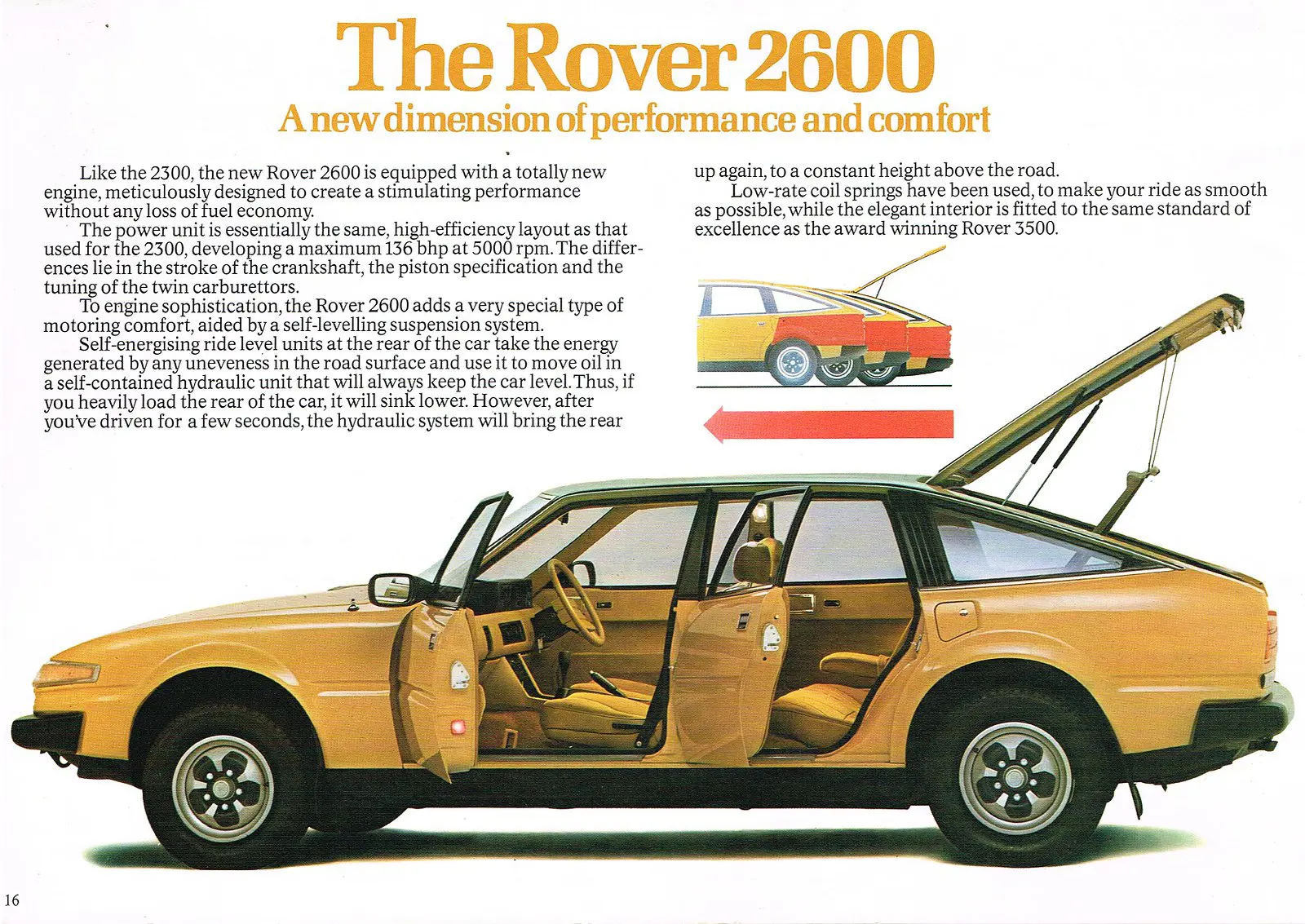ROVER 2600 SD1
24 October 2023
When British Leyland commenced work on the SD1, David Bache, Rover’s Head of Design, intended to create a five-door supercar on a limited budget. He later stated: “It may be more difficult to achieve high standards with a simpler design because more intensive development is needed: but the results of this effort are well worthwhile, because of the easier manufacturing and servicing that follows”. Bache further wrote in the brochure “Early styling mock-ups were put alongside cars like Maseratis and Ferraris”.

Rover unveiled the 3500 on the 30th of June 1976, and Autocar regarded it as “superb, and worthy of the highest praise”. The SD1 became Car of The Year 1977, and the famous PR shot of a 3500 under Concorde’s nose highlighted this was an exciting new generation of Rovers.
Leyland planned to introduce a complete SD1 range in October 1975, but production issues meant the 2300 and 2600 finally made their bows in 1977. The former was for the junior executive market. BL promoted it as a prestige vehicle that imposed “no more tax liability on their user than an ordinary 2 litre company car”.
The 2300 cost £5,342.41 and had rear variable-rate coil springs with telescopic dampers instead of the self-levelling suspension. It also lacked PAS, a passenger door mirror, a rev counter, an oil pressure gauge, a five-speed transmission, a cassette player, electric windows, and central locking. The 2600 was better-appointed and capable of 117 mph, as opposed to the 2300’s 104 mph top speed.
To promote the 2300 and the 2600, Leyland commissioned a sales film starring Anton Rogers entitled Two More For The Road. At one point in the narrative, a Rover assists the owner of a broken-down Volvo - a not overly subtle reference to one of its main competitors. Meanwhile, the motoring writer Clive Richardson thought:
Leyland are tilting particularly at Granada sales with these new models. Having driven both Ford (the new model) and Leyland offerings we can say that they are alike as chalk and cheese. The Rover is definitely more sporting, tauter in its ride and harder on the ears, reminiscent of a BMW ‘six’. The new Granada is a “softer”, quieter car. The choice is one of matching human temperament to motor car temperament.
The price of the 2600 was £5,799.69, and Autocar found it “a pleasure to drive, the more so because it has found itself a rather sporting character”. In the late 1970s, many Rover enthusiasts preferred a combination of the 2600’s 2,597cc six-cylinder engine and five-speed manual gearbox to the 3500 Automatic as they found it more of a sports saloon.
Practical Motorist found the 2600 “one of the sweetest cars we’ve driven”, and Car described it as one of a trio of vehicles representing the very best available. The other members of their group test were the Lancia Gamma Berlina and the Peugeot 604 Ti. Plus, the 2600 boasted a ‘superior cut pile carpet’, a map lamp and illuminated heater controls - status symbols that the 2300 lacked.
The line-up received a significant facelift in January 1982 with £8 million worth of revisions. Production ended in July 1986 when a Silver Leaf Vitesse registered D 537 PUK departed the factory. Today, every surviving SD1 is much sought after by collectors. And to quote David Bache, “‘elegant’ describes the styling philosophy behind the new Rover”.
